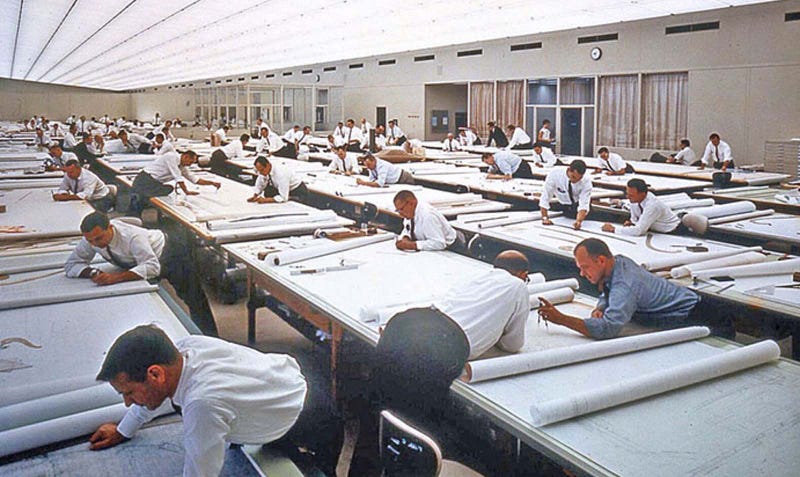Innovation is a funny thing. Our conceptions of innovations give us the impression that innovation, comes from an original idea. An Idea that no one has thought of before. It is an idea that has been formulated out of thin air. Spoiler Alert: that's absurd. Ideas especially the ones that go on to innovate and change the world are a culmination of various ideas experiences that come together to create an idea that moves society. How can the past move us forward?
Education
Whatever you do, whether it is creative, technical, or even athletic pursuits, we all start somewhere. we learn the basics. in Design, we learn about the principles of good design. we learn to master the tools of our trade. we become a designer by training. In All those stages we are always looking at the past. To learn, refine, and advance our skill set.
This path is similar to most paths in life. We start as beginners and learn to be proficient in whatever we try to learn. In all forms of education, teachers pull from their experiences to give us more efficient methods, and we learn from the masters of our industries. In Architecture, we learn about Frank Lloyd Wright and Le Corbusier, and in writing, we read the works of masters from different periods. ( side note: if you have an exotic name and you have no redline under it, you're a big deal)
History
Most degrees in college, have some sort of history component to them, some more than others. Some come in the form of consuming the works of the previous master such as Philosophy and Literature, and others through case studies like in business. In other disciplines like physics, we see the remnants and history of previous masters through equations and discoveries, that without them we could not practice at the same capacity.
Becoming Functional
Once we learn the gifts, previous masters, in a certain craft have bestowed upon us, we learn the trade. We learn to become the “craftsman”. This is especially true for creative pursuits. When we go to school for architecture or graphic design, for most the ultimate goal is to practice and hopefully get paid for what we were taught to do.
In this model of our education, we might take some learn a few techniques pioneered by the greats, but for the most part, we are trained by our teachers who use their experience on how to be functional in the modern age. Although Frank Lloyd Wright created stunning work, He is of no use when learning CAD Software, which is standard in contemporary architecture.
Some teachers will inspire us more than others, but they bridge the innovations of the past to modern applications. Teachers are important, and they pave the path on our journey to achieve the innovation we so desire. We can, at times, be hard-headed to do things a certain way, but the power of a teacher is to tell you, my years of practice have taught me the optimal way of doing things, give it a try and see if it works for you. They can potentially save us years of trial and error.
Experience
Experience is probably our greatest teacher. I subscribe to the notion that “just because you write an essay, it doesn’t make you a Writer.” What will turn you into a functional professional is an experience. It teaches what books can’t. We use the history of the masters, the functional education, and the guidance from our teachers, to find an opportunity to build our experience.
It is from our experience that we become more valuable in a professional sense, but gives us the opportunities to create our own ideas, to be able to contribute to our field. With what we learned we can make meaningful steps towards innovation.
We all Stand On the Shoulders of Greatness
When I was studying Philosophy, there was a saying that between the Greeks (Socrates, Plato, Aristotle) and Kant, every question has been asked. The people we learned about created a framework and a foundation for us to stand on.
Usually, greatness is categorized in a time and place. We look at the innovation of the past given the tools, training, and skill of the past. We look at the empire state building, and maybe if it was 2021 it would be nothing special, but in 1930, it was a modern marvel. Imagine life before CAD software. It was painstaking.

Innovation was limited to the tools and materials of the time. Nevertheless, we cannot discount the innovations of the past, but the point is we innovation is applicable to the time and place, and there is just as much to learn from how they were able to innovate.
The Orginal Idea That Change the World
Changing the world is hard. Innovation takes time, but there some key factors that we can learn from the past that can help us. The most important way we can learn from our past is components makes innovation come sooner.
Increase the standard
Once food became more readily available, we saw a boom in innovation. When you don’t have to worry about where your next meal will come from you have a bit more time to create and solve bigger problems.
In Modern times, Great ideas like the internet and ensuing software, have made our lives more streamlined. Information arbitrage is almost non-existent. We have been able to increase our standards in so many areas of life that we can now focus on new areas to improve.
The Next “frontier” that we need to push through to see exponential innovation is education. We have been shoved in this digital age, and believe it or not as a world population is not at the digital literacy and education that will lead to increased innovation. This is due to limited resources, and late adoption. This a problem that will not be solved in a blog post, but it is the new baseline that, once achieved will create a step-function increase in innovation.
Innovate for today, not the future
The greats of yesteryear were more practical. They were solving the problems of their age. This seems very weird to say, but you can innovate too far in the future. There are companies that are creating things that will not be relevant functional, and most importantly necessary in our lifetime. I will not specify companies, but just remember that space has been researched and explored more than our own oceans.
Making a better product is more important than making the next product. Henry Ford didn’t invent the car but was able to innovate in a way that every person had the opportunity to own the car. He didn’t see the car and start designing the flying car. Nikola Tesla brought to light (pun half intended) that AC Currents would be a more efficient way to distribute electricity rather than DC Currents. Sam Walton Innovated Distribution and was able to bring products to the public faster and cheaper. He didn’t invent the supermarket or any of the products he sold. Basically, make things better.
Execution
This is turning into a rant, and I will add other blogs on different topics, so I abuse your time with my monkey brain. Most Ideas have been imagined. Da Vinci designed the Helicopter, Tesla was talking a form of WiFi. Innovation comes from the person that can make those ideas a reality.
Innovation will come from those that can bring the news to the people, and make it widely accepted and used. There were 40 years between the computer being invented and being used by the general public at scale. If you want to innovate think about execution.
Our Heros, the past masters that changed the world, through their ability to execute, and their ability to find relevant applications. Let us follow in their lead, and innovate to make today better, so our children can innovate for tomorrow. Let us learn from the past, innovate for today, and create the foundation for tomorrow.

